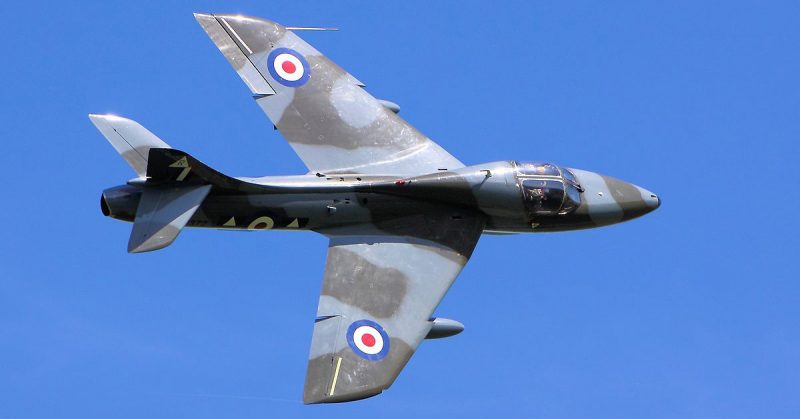Founded between the world wars, Hawker Aircraft Limited produced some of Britain’s most successful fighters.
The Hawker Fury
The Fury was a small biplane. First flown in March 1931, it entered service in the Royal Air Force (RAF) only two months later. For several years, it was the RAF’s main fighter plane. It stayed in front-line duty until 1937, when it was replaced by the Gloster Gladiator.
Pilots loved the Fury. It was the first RAF fighter to reach a speed above 200mph, had a great rate of climb, and was governed by sensitive controls. This allowed displays of acrobatic excellence that became a prominent highlight of the popular Hendon Air Pageants.
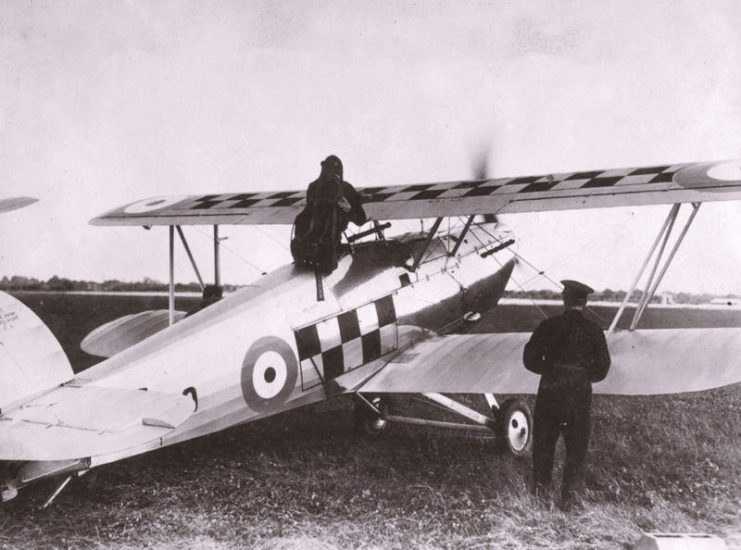
Though it was no longer an RAF mainstay, the Fury saw action in the Second World War thanks to the other countries that had adopted it. South African Furies fought in East Africa and the Yugoslavs used them in their attempts to fight off the German invasion.
The Hawker Hurricane
First flown in November 1935, the Hurricane was rushed into production thanks to the threat of war looming over Europe. It provided the RAF with its first eight-gun monoplane fighter and was the first RAF plane to go faster than 300mph.
For the Hurricane, Hawker kept the metal tube and fabric covering construction of their earlier planes, rather than adopting more modern stressed-metal fuselage. Stressed-metal wings were quickly added once the plane entered service.
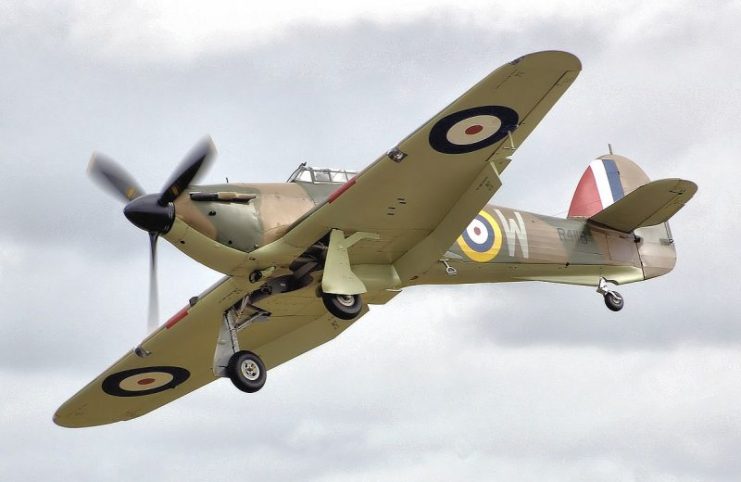
Like the Fury, the Hurricane was popular with its pilots. Its speed and maneuverability made it a deadly weapon, and it was tough enough to take a lot of damage while still able to maintain flight.
At the start of World War Two, Hurricanes outnumbered the more famous Spitfires by two to one. They did the bulk of the fighting for Fighter Command in the early war, flying in the defense of France before doing great service in the Battle of Britain.
Various versions of the Hurricane saw service for over a decade. The last model, the Mark IV, flew for the RAF until 1947.
The Hawker Typhoon
When the Air Ministry asked for an interceptor that could make use of a new Napier 24-cylinder engine, Hawker responded by designing the Typhoon. It had its first flight in February 1940, when the pressure was on to produce cutting-edge weapons for the war. But problems with development and manufacturing meant that it didn’t enter service until August 1941.
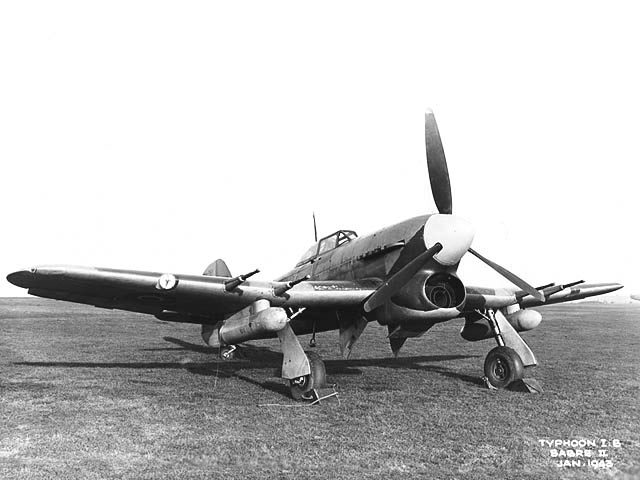
As the RAF’s first 400mph fighter, the Typhoon should have been another popular effort from Hawker. But the Sabre engine proved unreliable, with a low rate of climb and poor performance at high altitudes. Paired with a weakness in the tail of early Typhoons, this made for a disappointing plane that was almost scrapped.
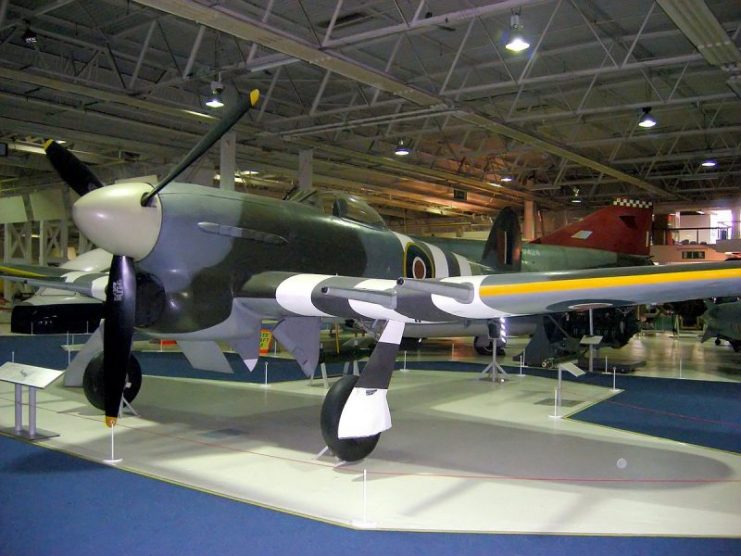
Despite this, the Typhoon found a role for itself intercepting high-speed Focke-Wulf 190s as they raided southern Britain. As the Allies went on the offensive in Europe, the Typhoon was equipped with bombs and rockets, becoming a deadly ground-attack machine. It was important in crippling German communications on D-Day and attacking Axis troops in the fighting that followed.
The Hawker Tempest
Determined to improve upon the Typhoon, Hawker took its basic design and turned it into the Tempest. This had a longer fuselage and a thin laminar flow wing, features chosen to improve climb and high-altitude performance. Five different versions were thought up to try out various engines, but only three entered service – Marks II, V, and VI.
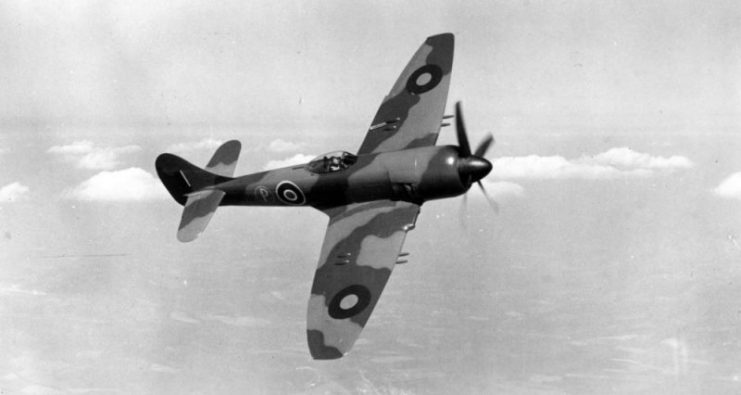
In September 1942, the Tempest V became the first of these planes to take flight. It was the only model to see action in the war, joining the RAF in April 1944.
At first, Tempests were used for ground attack missions, but it was as an interceptor that they really excelled. The fastest planes in Britain’s air defense fleet, they destroyed 638 V-1 flying bombs and 20 Messerschmitt Me262s, the world’s first operational jet fighters.
The Tempest served for several years after the war, including as a show of force during the Berlin Airlift.
The Hawker Sea Fury
Late in the war, Hawker tried to develop a lighter version of the Tempest for the Royal Navy and RAF, once again taking the name Fury. At the end of the war, the RAF lost interest, instead pushing toward jet fighters. But the Navy persisted, resulting in a new prototype with folding wings and an arrester hook for service on an aircraft carrier.
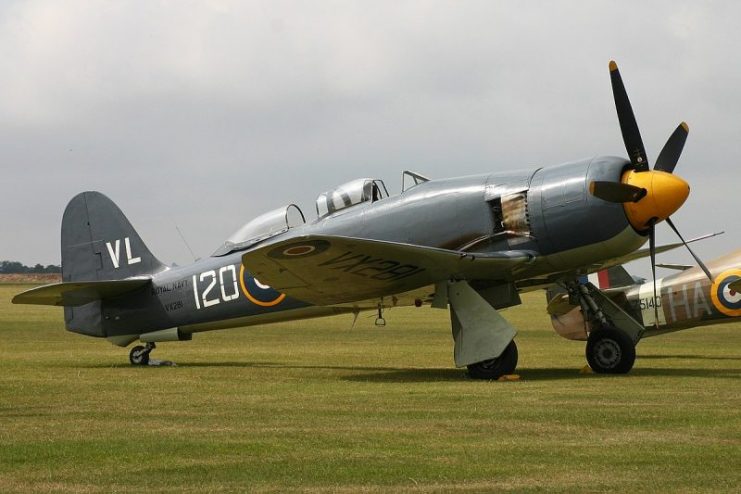
The version that entered service in August 1947 was the Sea Fury Mk X. This was further developed into the Sea Fury FB. Mk 11, the ultimate British piston-powered fighter. It was used in the Korean War, mostly for ground attacks but also as an interceptor. Fury pilots even managed to shoot down jet-powered MiGs.
The Royal Navy retired the Sea Fury in 1957. It continued in use in other navies and as a racing plane in the United States, where it set world records for speed.
The Hawker Hunter
Hawker’s great contribution to the world of jet fighters, the Hunter was a product of the early Cold War. A prototype flew in 1951, another broke through the sound barrier in 1952, and it entered RAF service in 1954.
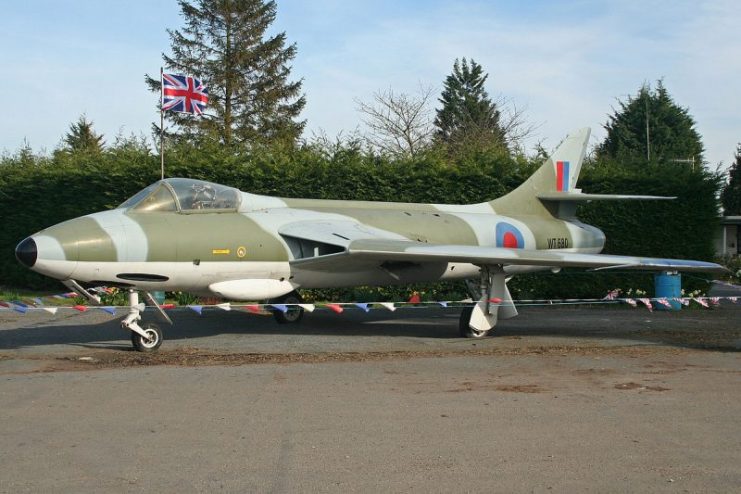
The first RAF fighter able to exceed the speed of sound, the Hunter was a result of great technological advances. Unfortunately, problems with the weapon system reduced the effectiveness of early models, leading to hasty changes.
The Hunter fought as both an interceptor and a ground attack aircraft. It saw action during the Suez crisis, attacking Egyptian ground targets.
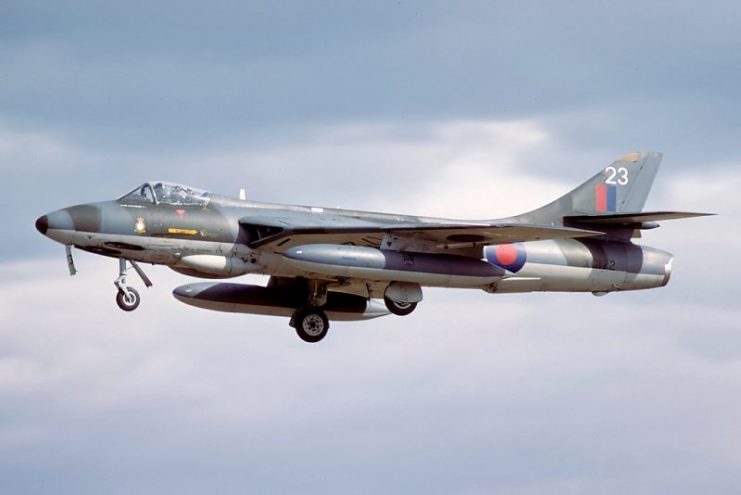
By 1963, better performing planes had arrived to replace the Hunter as an interceptor. It continued to serve in a ground attack role until 1970 and as a training plane into the 1980s. Britain’s longest-serving jet fighter, it was exported around the world, where it saw action against Israel and Pakistan and was still a frontline aircraft for two countries in the year 2000.
